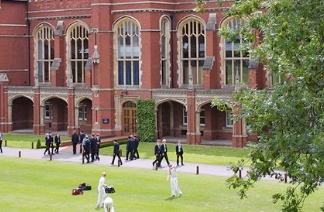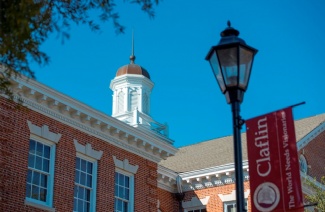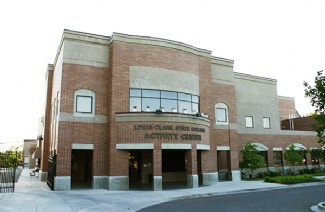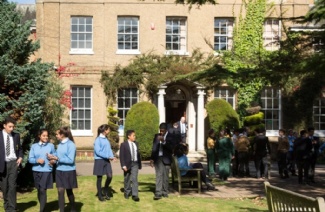The passage below is followed by questions based on its content. Answer the questions on the basis of what is stated or implied in the passage and in any introductory material that may be provided.
Questions 7-19 are based on the following passage.
Frederick Douglass (1817-1895), who escaped from slavery, became an author and publisher and was internationally known for his instrumental role in the abolitionist movement.
In spite of the ridicule that various newspapers aimed at the women’s movement, Frederick Douglass continued to lend it his active support. Indeed, few women’s rights conventions were held during the l850’s at which Douglass 5 was not a featured speaker and whose proceedings were not fully reported in his paper. Invariably. the notice would be accompanied by an editorial comment hailing the meeting and expressing the editorial hope that it “will have a power-ful effect on the public’s mind." In 1853,`when Douglass 10 was considering changing the name of his newspaper, he rejected the proposed title, The Brotherhood, because it “implied the exclusion of the Sisterhood." He called it Frederick Douglass' Paper, and underneath the title were the words "All Rights For All!" '15 Because women were not permitted to speak at mass meetings of state temperance associations,| women in New York formed the Woman's State Temperance Society, with Elizabeth Cady Stanton as president. Douglass supported the society but took issue with the move led by secretary 20 Amelia Bloomer to limit to women the right to hold its offices. He aligned himself with Stanton and Susan B. Anthony in opposing this as a violation of “the principle of human equality"-a violation, in short. of men’s rights. Douglass felt that by excluding men from office the society 25 would lose supporters in the battle against those in the temperance movement who wished to deny women equal rights. l-low. he asked. could women effectively contend for equality in the movement when they denied it to men?
ln lune l853. the society accepted the logic of this position 30and admitted men to office. Douglass leamed much from women with whom he associated at the national and state women`s rights conventions. At one time, he had entertained serious doubts about wives being given the tight to share equally with their 35 husbands the disposition of property. since “the husband labors hard" while the wife might not be earning money.
But his discussions with pioneers of the women’s rights movement convinced him that even though wives were not paid for their domestic labors, their work was as important 40 to the family as that of their husbands. Once convinced, he acted. He wrote the call for the 1853 convention in Rochester, New York. which demanded not only that women be paid equally with men for their work. but also that women. including married women. have equal rights 45 with men in the ownership and disposition of property. ln his newspaper that year. Douglass urged state legislation
calling for passage of a law requiring equality in "the holding. and division of real and personal property.” On one issue, however,Douglass refused to budge. 50 He was critical of women’s rights leaders who addressed audiences from \which Black people were barred. His particular target was Lucy Stone. Douglass often praised this abolitionist and veteran lighter for equal tights for women. but he criticized her for not having canceled a _55 lecture in l853 at Philadelphia’s Music Hall when she discovered that Black people would be excluded. Later. he was more severe when he learned that she had invited Senator Stephen A. Douglas of Illinois, one of the archi-tects of the infamous Fugitive Slave Act of 1850.3 to join 60 the women who were to meet in Chicago in i859 to publicize the women’s rights cause. Frederick Douglass bluntly accused Stone of willingness to advance women’s rights on the back of “the defenceless slave woman" who "has also to bear the ten thousand wrongs of slavery in addition to 65 the common wrongs of woman."
Douglass' disputes with some of the women’s rights leaders went beyond the question of their appearance before segregated audiences. Women like Stanton and Anthony were close to abolitionist William Lloyd Garrison. 70 When Douglass split with Garrison over the latter’s reliance on words and “moral suasion” as the major route to abolition. as well as over Garrison`s opposition to antislavery political action, some women’s tights leaders grew cool toward Douglass. 75 Although Susan B. Anthony had sided with Garrison. she solicited Douglass` support in her campaign against capital punishment. She circulated a petition for a meeting in 1858 to protest an impending execution and to support a law making life imprisonment the punishment for capital 80 crimes. Long an opponent of capital punishment. Douglass signed the petition. prepared at set of resolutions on the issue. and agreed to take over for the scheduled chair. who had been intimidated by mob violence. Douglass' conduct won over even those women who had allied themselves 85 with Anthony and Garrison.
Thus. on the eve of the Civil War. Douglass' relationship with the women`s movement was once again cordial. Although this situation was to change after the war. Douglass' influence had helped the women's rights 90 movement become more sensitive to the issue of prejudice against Black Americans. 1Temperance associations were groups that advocated laws to control the use or alcoholic beverages.2The Fugitive sim Act of 1350 authorized slaveholders to reclaim runaway slaves.
7 The passage provides the most information about Douglass
(A) loyalty to old friends
(B) refusal to change old ideas
(C) fluent writing style
(D) political activism
(E) tactful rhetoric
8 In context. the word “hailing” (line 7) most nearly means
(A) pouring down on
(B) audibly greeting
(C) summoning
(D) originating
(E) praising
9 The discussion of the naming of Douglass' newspaper
(lines 9-14) suggests that Douglass was
(A) very effective at persuading others to adopt his
point of view
(B) more committed to women’s rights than he was to
other reform movements
(C) concerned that his paper HO( receive the same kind
of ridicule that women`s rights publications had
(D) a reformer who recognized the similarity among
the goals of different causes
(E) eager to publicize the recent successes of the women’s rights movement
10 The passage suggests that Stanton and Anthony prevailed against Bloomer (lines 21-30) because their position
(A) defied the male status quo
f B) asserted women’s political rights
(C) opposed Douglass' ideas
(D) was recognized as being politically wise
(E) had financial consequences
11 The discussion of Douglass' position on property rights for women (lines 33-48) suggests that Douglass
(A) was extremely adept at political negotiation
(B) was flexible enough to change his views
(C) sided with women’s rights leaders on this issue so that they would support him on abolition
(D) believed that causes should be tackled one at a time
(E) believed that state laws could be easily changed
12 ln context. the phrase ‘°disposition of" (line 45) most nearly means
(A) exploration of
(B) safeguarding of
(C) control over
(D) characteristics of
(E) payment for
13 In lines 49-65, the passage mainly suggests which of
the following about Lucy Stone?
(A) She allowed one of the two causes she endorsed to supersede the other.
(B) Her courageous actions consistently won Frederick Douglass' respect.
(C) She was willing to compromise for the sake of
abolition.
(D) She and Stephen Douglas had little in common
politically.
(E) Her political inexperience contributed to certain
errors in judgment.
14 Douglass probably believed that using Stephen A.
Douglas to publicize women’s rights amounted to
(A) allowing men to influence women’s associations
(B) supporting the repeal of the Fugitive Slave Act of 1850 .
(C)contradicting the philosophy of temperance
(D)inadvertently sacrificing the gains that women had made
(E) tacitly exploiting Black women who were slaves
15 Douglass probably regarded the technique of “moral
suasion" (line 71) as
(A) suitable for only the capital-punishment cause
(B) preferable to lengthy political debate
(C)less desirable than direct action
(D) too closely associated with the temperance movement
(E) too subtle for most mass meetings
16 Women’s rights leaders most likely “grew cool toward
Douglass" (lines 73-74) because they
(A) were experiencing dissension among their ranks
(B) preferred Garrison`s political approach
(C) strongly favored the use of civil disobedience
(D) felt that Douglass had not been contributing actively to their movement
(E) realized that Douglass had stopped publicizing
their concerns
17 As presented in the passage. Douglass` views
coincided most consistently with those of
(A) Stephen A. Douglas
(B) William Lloyd Garrison
(C) Amelia Bloomer
(D) Lucy Stone
(E) Susan B. Anthony
18 The author apparently believes which of the following
about the interaction between the abolitionist and the
women’s rights movements?
(A) It helped both groups broaden their perspectives in spite of frequent friction between them.
(B) It seemed to many to be productive but actually caused both groups to make their goals too general.
(C) It was natural. since both groups got their start at the same time.
(D) It was rewarding for members of both groups but made both less popular with the public.
(E) It was politically expedient for both groups in spite of their reluctance to work together.
19 According to the passage. Douglass most consistently opposed
(A) using the press to criticize the women’s and abolitionist movements
(B) allowing men to hold office in women’s state temperance associations
(C) pay scales that were higher for men than for women
(D) neglecting the rights of other groups while
furthering the rights of women `
(E) property laws that gave men more rights than they gave women

















